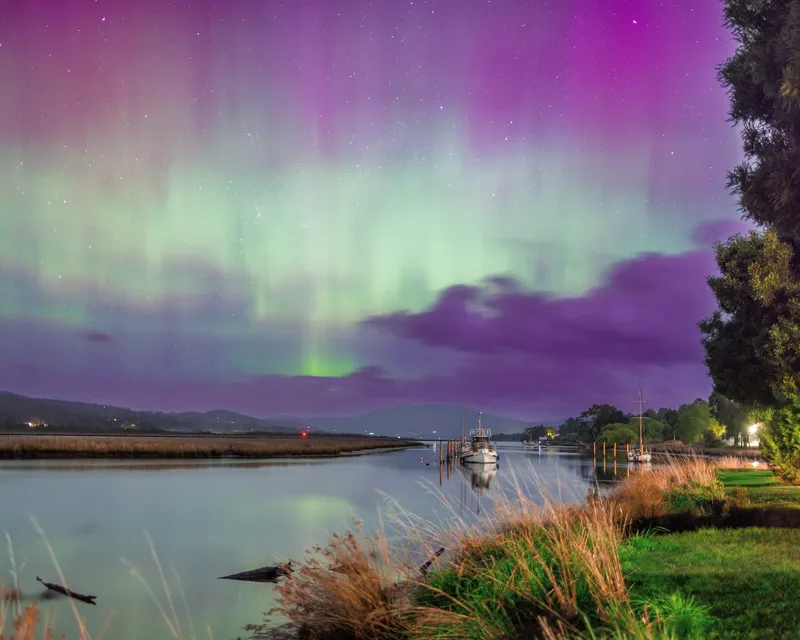The best place in the Huon Valley to see the Southern Lights

What is the Aurora Australis?
The Aurora Australis–often called the southern lights–is a natural glow in the night sky caused by space weather. It appears as curtains, arcs, or ripples of green, pink, and red light stretching across the southern horizon, sometimes bright enough to reflect on the Huon River.
How does it work?
Explosions on the Sun send streams of charged particles (the solar wind) toward Earth. Our planet’s magnetic field funnels these particles into the polar regions, where they collide with oxygen and nitrogen high in the atmosphere. Oxygen typically produces green (around 100–150 km up) and deep red (above ~200 km), while nitrogen can add pinks and purples along the edges.
Best time of year
You’re more likely to see aurora in the colder months when nights are longer and skies are clearer: late autumn through early spring in Tasmania (roughly April–September). That said, strong solar events can spark displays any time of year–dark, cloud-free nights are the non-negotiable.
Time of night & moon cycle
Prime viewing is from astronomical twilight into the small hours–roughly 9 pm to 2 am in winter–though powerful shows can pop earlier or later. A darker sky helps, so aim for a new moon or slim crescent. Around first quarter to full moon, the bright moonlight can wash out fainter aurora; if the moon is up, keep it behind you and use the river’s southern view to your advantage.
Sun cycles & space-weather signals
Aurora chances rise during periods of elevated solar activity: sunspot peaks in the ~11-year solar cycle, coronal holes that drive fast solar wind, and coronal mass ejections (CMEs) that deliver strong geomagnetic storms. Watch indicators like the Kp index (Kp 5+ is storm level), sustained south-pointing IMF (Bz < 0), and rising solar wind speed and density–those numbers often precede a good night on the riverbank.